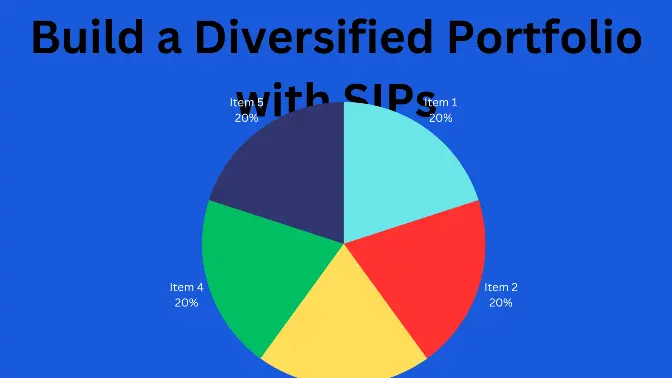The power of compounding and compound interest has long been touted as essential ingredients to successful wealth creation.
But what exactly are they and how can they be harnessed to transform your investments?
In this blog post, we will explore the power of compounding in SIP investments,
showing you how starting early and investing consistently can lead to significant wealth accumulation over time.
We will dive into the mechanics of compounding, the benefits of Systematic Investment Plans (SIPs), and the strategies for maximizing your returns.
Note: Open a Demat account to invest

Understanding the Power of Compounding and Compound Interest
The Basics of Compounding
The power of compounding, often referred to as the eighth wonder of the world,
lies in the way it magnifies your investment returns exponentially.
Compounding is the process where the returns on your investment are reinvested,
leading to a snowball effect as the interest earned on your initial investment generates additional interest in subsequent periods.
Compound Interest Formula
To better understand the power of compound interest, consider the formula:
A = P(1 + r/n)^(nt)
Where: A = the future value of the investment/loan, including interest
P = the principal investment amount (initial deposit or loan amount)
r = the annual interest rate (decimal)
n = the number of times that interest is compounded per year
t = the number of years the money is invested or borrowed for
This formula shows how the power of compounding magnifies the growth of your investment over time.
The longer you invest, the greater the impact of compounding on your returns.
The Benefits of Systematic Investment Plans (SIPs)
What are SIPs?
Systematic Investment Plans (SIPs) are a disciplined approach to investing in mutual funds,
allowing investors to contribute a fixed amount at regular intervals,
regardless of market conditions.
SIPs enable investors to leverage the power of compounding by spreading their investments over time,
thereby reducing the impact of market fluctuations and mitigating risk.
Advantages of SIPs
Rupee Cost Averaging: By investing at regular intervals, SIPs take advantage of market fluctuations and reduce the average cost per unit, known as rupee cost averaging.
This approach helps in lowering the overall cost of investment and enhances returns over time.
Discipline and Consistency: SIPs instill financial discipline, making it easier for investors to allocate funds towards their long-term goals consistently.
Flexibility: SIPs offer flexibility in terms of investment amount and frequency, allowing investors to adjust their contributions based on their financial situation.
Maximizing the Power of Compounding with SIPs
Starting Early
One of the most effective ways to harness the power of compounding in SIP investments is by starting early.
By beginning your investment journey at a young age, you give your money more time to grow, resulting in exponential wealth accumulation.
The longer you stay invested, the more significant the impact of compounding on your returns.
Consistent Investments
Consistency is key when it comes to leveraging the power of compounding in SIP investments. Regular contributions to your SIP,
regardless of market conditions, ensure that you continue to benefit from the snowball effect that compounding offers.
Increasing SIP Amount
By increasing your SIP amount periodically, you can further accelerate the power of compounding.
This can be done by either increasing the frequency of your investments or by increasing the amount invested during each interval.
Reinvesting Dividends
Dividends received from your investments should be reinvested to maximize the power of compounding.
Reinvesting dividends allows you to purchase additional units of
the mutual fund, which in turn generates more returns and further compounds your wealth.
Long-term Perspective
It is essential to maintain a long-term perspective when it comes to SIP investments.
The power of compounding truly works its magic over extended periods, and the longer you stay invested, the more significant your wealth accumulation will be.
Avoid making impulsive decisions based on short-term market fluctuations and stay focused on your long-term financial goals.
Real-life Examples of the Power of Compounding in SIP Investments
Example 1:
Let’s consider two investors, A and B, both aged 25. Investor A starts investing INR 5,000 per month in a SIP with an expected annual return of 12%.
In contrast, investor B waits until the age of 35 to start investing the same amount under similar conditions.
At the age of 60, investor A’s investment would have grown to approximately INR 5.98 crores, while investor B’s investment would only amount to INR 1.63 crores.
The ten-year head starts that investor A had allowed them to accumulate significantly more wealth through the power of compounding.
Example 2:
Consider two investors, C and D, both investing INR 5,000 per month in a SIP with an expected annual return of 12%.
Investor C invests consistently for 20 years, while Investor D invests for only ten years but then continues to hold the investment for another ten years without any further contributions.
At the end of the 20-year period, investor C’s investment would have grown to approximately INR 70.4 lakhs,
while investor D’s investment would only amount to INR 37.2 lakhs. Consistent investments allowed Investor C to accumulate almost double the wealth compared to Investor D.







